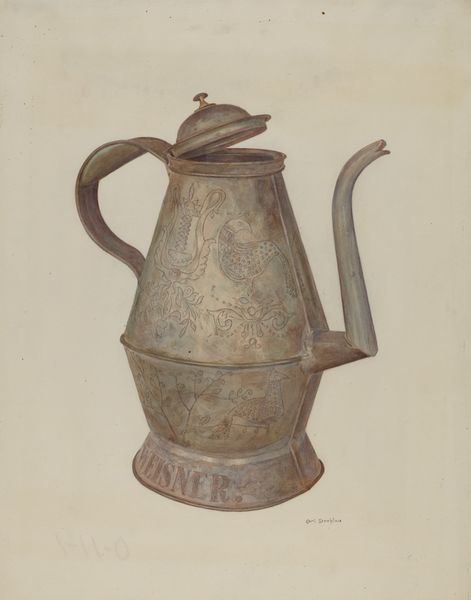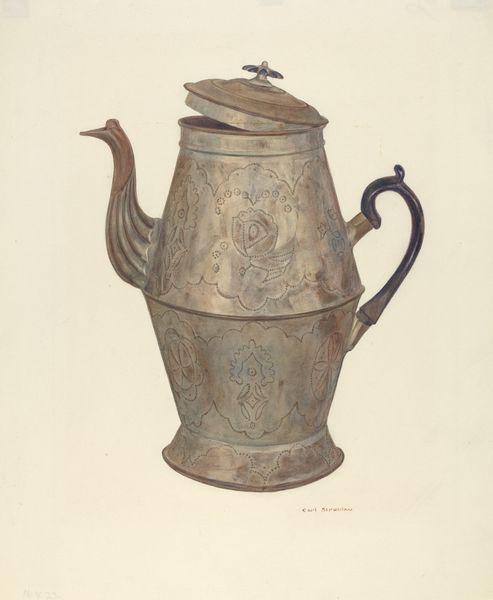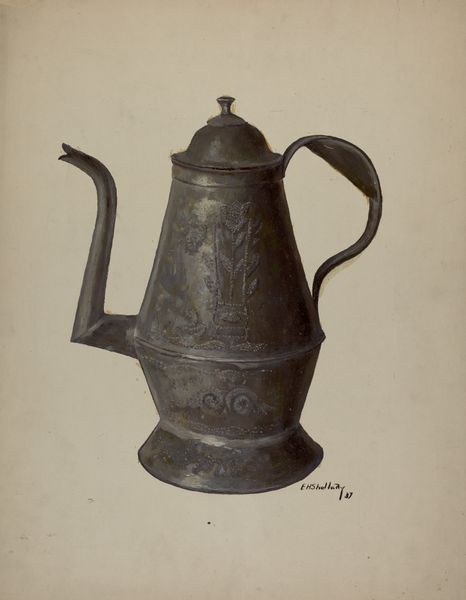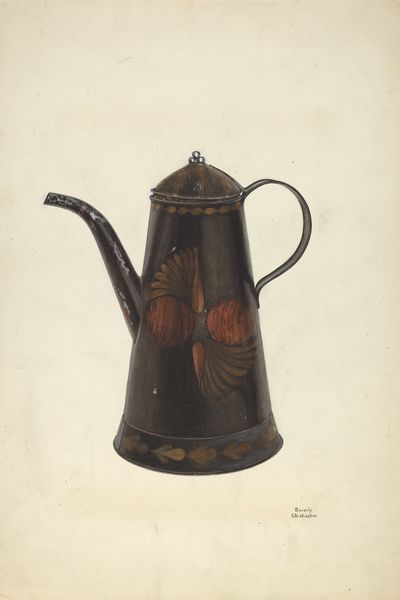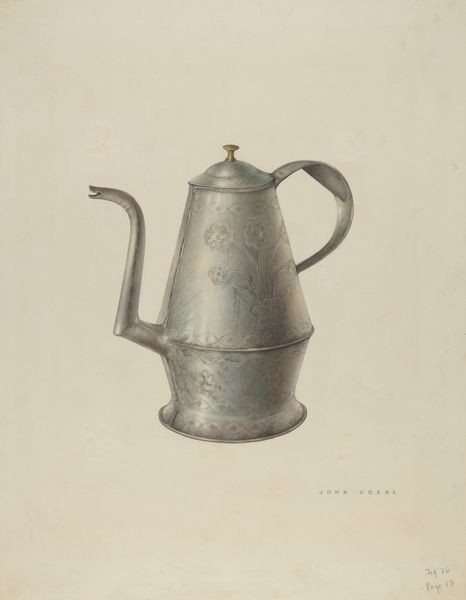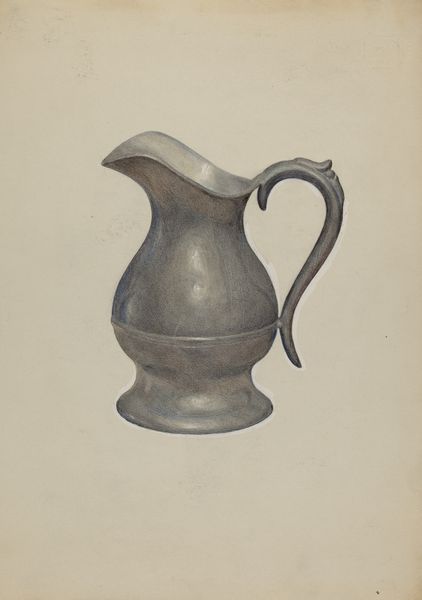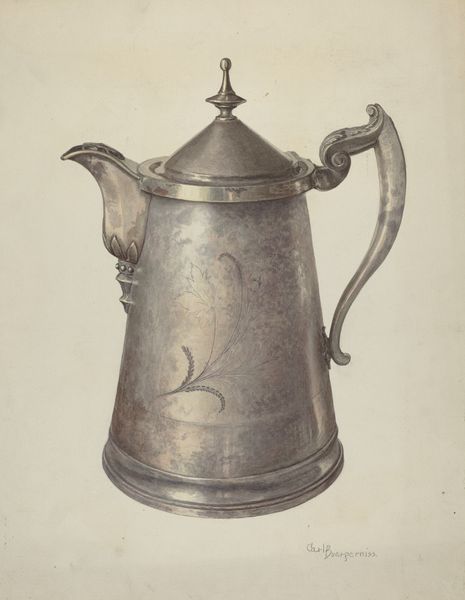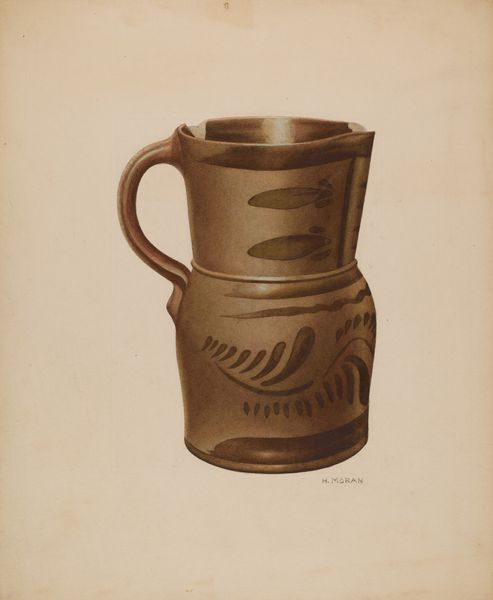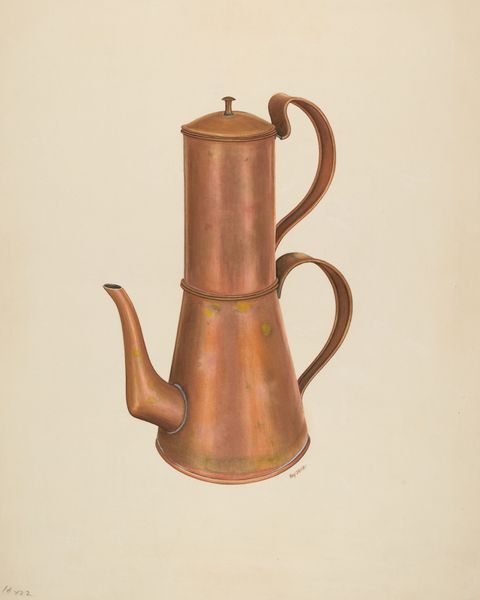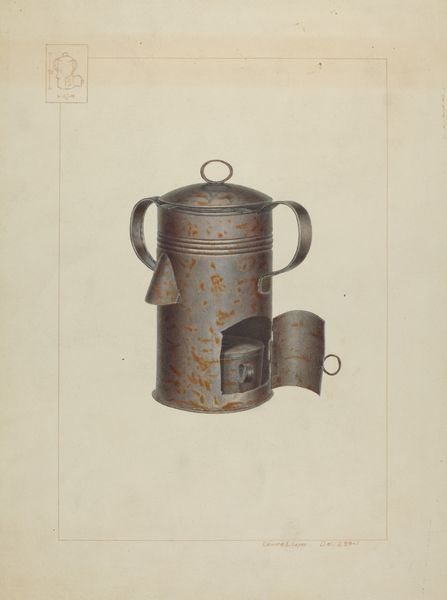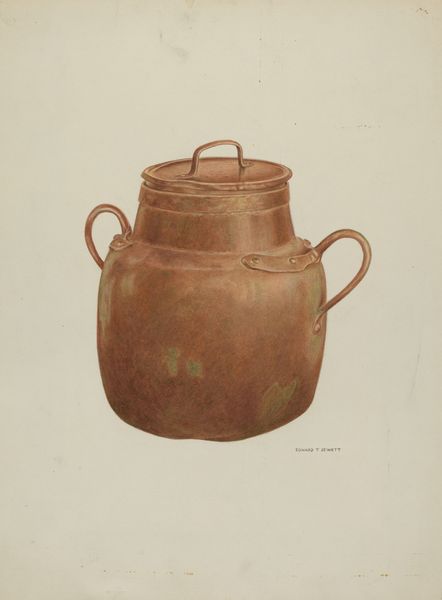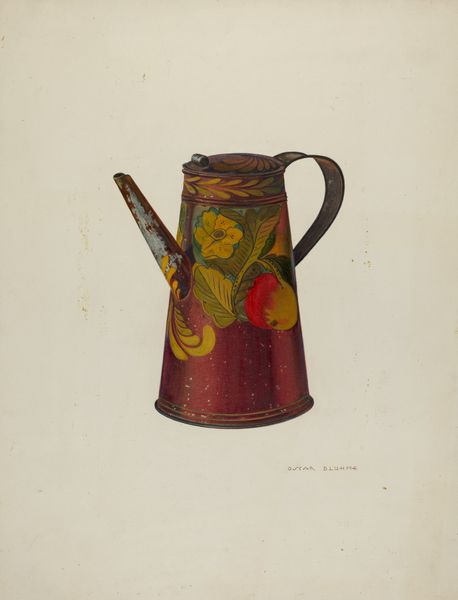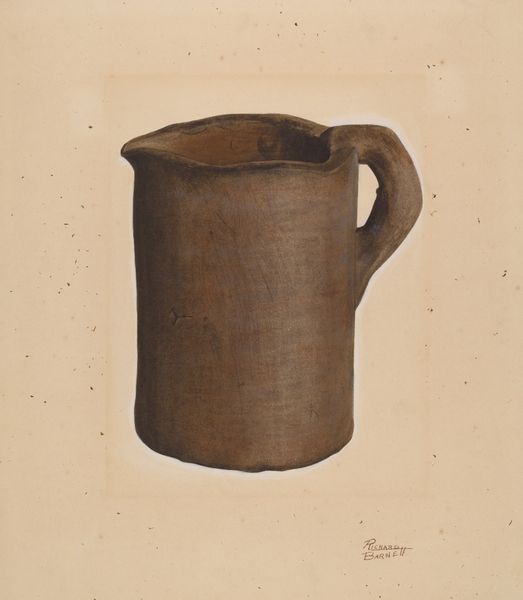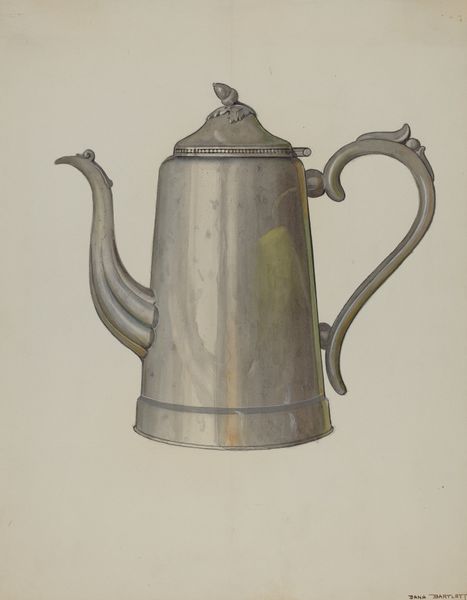
watercolor
#
watercolor
#
watercolor
Dimensions: overall: 34 x 27 cm (13 3/8 x 10 5/8 in.) Original IAD Object: 11" high; 10" wide
Copyright: National Gallery of Art: CC0 1.0
Editor: This is "Pa. German Coffee Pot," created around 1939 by Carl Strehlau, using watercolor. It gives off a rather antiquated, domestic feel. I'm struck by the geometric structure, this combination of cylinders and cones, and the muted palette. What do you make of it? Curator: Indeed. If we examine the structural relationships more closely, we can see a dialogue between form and surface. The conical upper section resolves into a cylindrical lower section. Consider also the tension established by the convergence of vertical lines against the interruptions caused by the banding. These formal choices lead the eye around the piece. What is your read of these linear patterned elements that adorn the body of the pot? Editor: Well, they seem to mimic floral or perhaps foliate patterns. Almost like embossed decoration. Does that speak to the work's historical or cultural context? Curator: Precisely. Although the botanical representation provides ornamentation, it also exists in a semiotic relationship with the very essence of "coffee pot." Its presence elevates the humble container through artistic interpretation, yet it paradoxically restrains it. The form seeks industrial modernity while being simultaneously tamed through decoration. The painting captures this conflict adeptly through the combination of structure and ornament. Note how these elements affect your perception of the piece. Editor: I hadn’t considered the tension between modernity and tradition embedded within this simple form, but I see that now. Curator: To fully grasp art, it's necessary to decode and analyze such opposing concepts within. The value is the structure which allows one to unpack what is ultimately relevant about the art in question. Editor: That's a fresh way to approach the analysis, focusing on structural oppositions. Thanks for sharing your perspective.
Comments
No comments
Be the first to comment and join the conversation on the ultimate creative platform.
